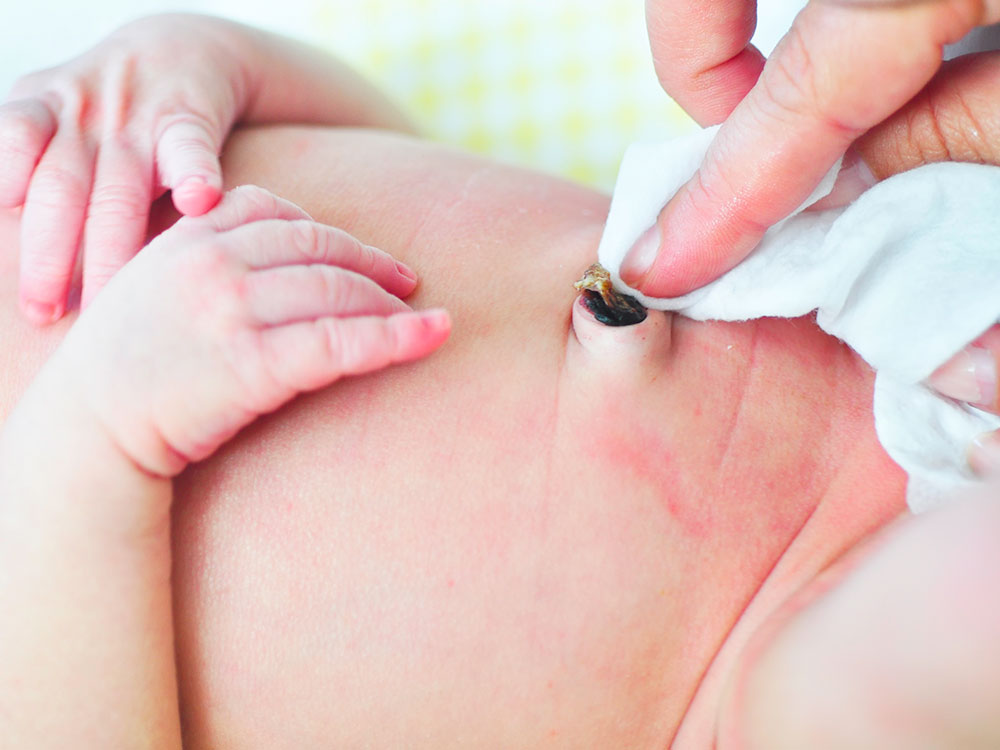
Newborn Baby Navel Care: A Comprehensive Guide
The arrival of a newborn baby brings immense joy and responsibility. Among the many aspects of newborn care, umbilical cord care holds significant importance. The umbilical cord, which connects the baby to the placenta during pregnancy, serves as a lifeline, providing essential nutrients and oxygen. After birth, the umbilical cord is clamped and cut, leaving a small stump attached to the baby’s abdomen. This stump, known as the navel, requires proper care to prevent infection and promote healing.
Understanding the Umbilical Cord
The umbilical cord is a flexible, rope-like structure composed of three blood vessels: two arteries and one vein. These vessels carry oxygenated blood from the placenta to the baby and deoxygenated blood back to the placenta. The cord is also surrounded by a protective layer of jelly-like substance called Wharton’s jelly.
Umbilical Cord Care After Birth
Immediately after birth, the umbilical cord is clamped and cut. The remaining stump is typically 1-2 inches long and will gradually dry up and fall off within 1-3 weeks. During this time, it is crucial to keep the navel clean and dry to prevent infection.
Steps for Newborn Baby Navel Care
-
Keep the Navel Dry: Avoid bathing the baby until the umbilical cord stump falls off. Sponge baths are recommended to keep the baby clean while avoiding submerging the navel in water.
-
Clean the Navel Daily: Use a cotton ball or gauze pad moistened with rubbing alcohol (70%) to gently clean the base of the cord stump. Avoid using soap or water, as these can irritate the delicate skin.
-
Fold the Diaper Below the Navel: Ensure that the baby’s diaper is folded below the navel to prevent friction and irritation.
-
Avoid Touching the Navel: Resist the urge to touch or pull at the umbilical cord stump. This can cause discomfort and delay healing.
-
Monitor for Signs of Infection: Keep an eye out for any signs of infection, such as redness, swelling, discharge, or foul odor. If any of these symptoms occur, seek medical attention promptly.
Common Concerns and Questions
-
When Will the Umbilical Cord Stump Fall Off? The umbilical cord stump typically falls off within 1-3 weeks after birth. However, some babies may take longer.
-
What if the Umbilical Cord Stump Bleeds? Minor bleeding from the navel is normal during the first few days after birth. However, if the bleeding is excessive or persistent, consult a healthcare professional.
-
What if the Umbilical Cord Stump Turns Black? It is normal for the umbilical cord stump to turn black as it dries up. This does not indicate a problem.
-
Can I Use Baby Powder on the Navel? No, baby powder should not be used on the navel. It can irritate the skin and delay healing.
-
When Can I Bathe My Baby? Once the umbilical cord stump has fallen off and the navel is completely healed, you can bathe your baby as usual.
Signs of Infection
It is important to be aware of the signs of infection in the navel. These include:
- Redness and swelling around the navel
- Discharge from the navel, which may be clear, yellow, or green
- Foul odor
- Fever
- Irritability and crying
If you notice any of these signs, seek medical attention immediately. Early treatment can prevent serious complications.
Prevention of Umbilical Cord Infection
Proper navel care is essential to prevent infection. Here are some tips:
- Keep the navel clean and dry.
- Avoid touching or pulling at the umbilical cord stump.
- Fold the diaper below the navel.
- Monitor for signs of infection.
- If you have any concerns, consult a healthcare professional.
Conclusion
Newborn baby navel care is a crucial aspect of ensuring the health and well-being of your little one. By following these guidelines, you can promote proper healing and prevent infection. Remember to keep the navel clean and dry, monitor for signs of infection, and seek medical attention if necessary. With proper care, your baby’s navel will heal quickly and without complications.
